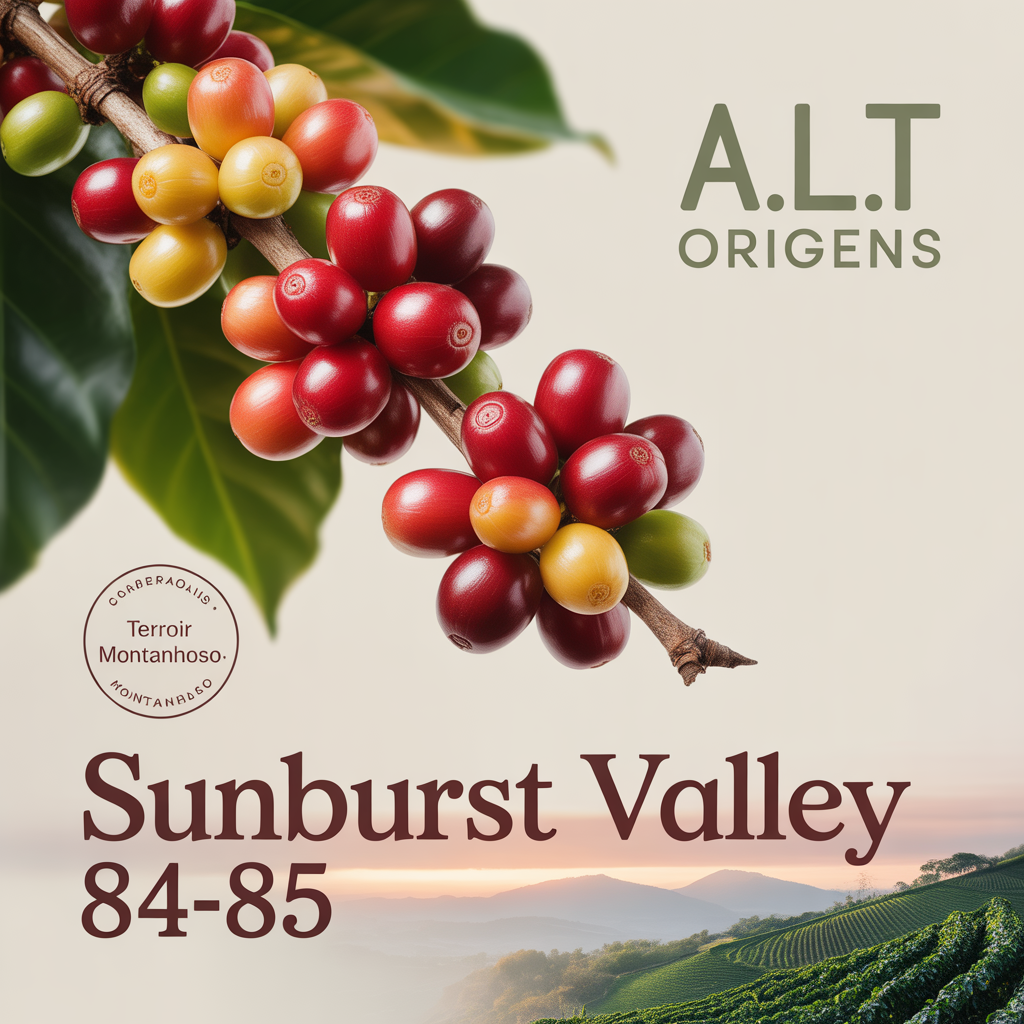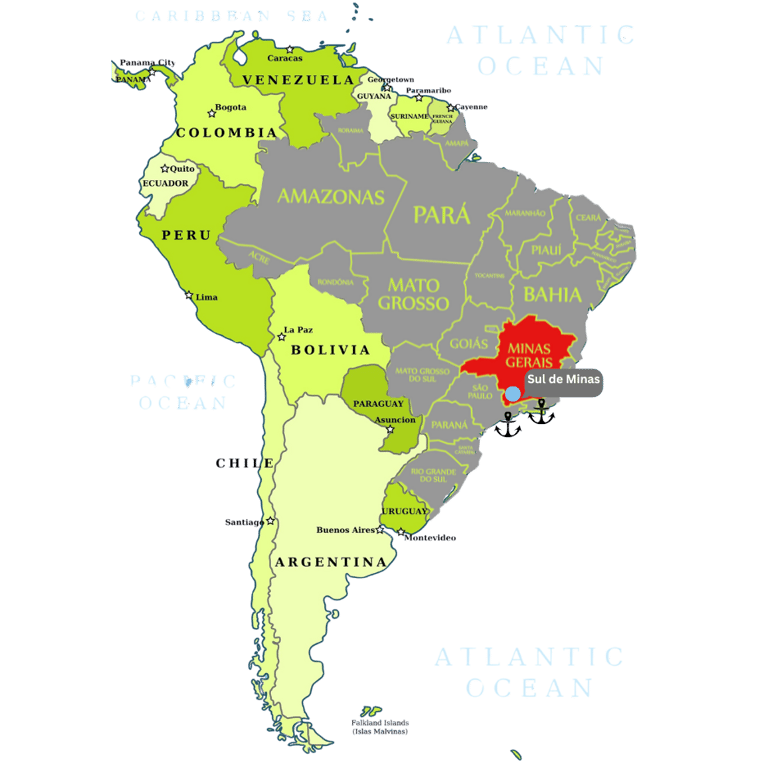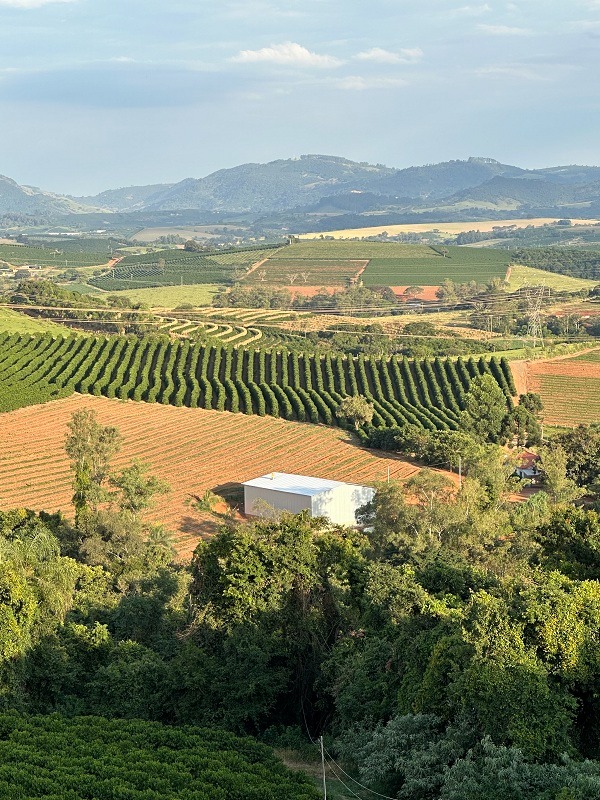
Sunburt Valley 84-85 Points - Screen Size 17/18 - 1kg - SAMPLE
£15.00
Out of stock
About This Coffee 84/85
This screen 17/18 natural is sourced from multiple farms in the Sul de Minas region.
Origin | Brazil | Plant Species | Arabica |
|---|---|---|---|
Subregion | Sul de Minas | Coffee Grade | BRA CA NAT FY NY 2 |
Harvest Season | 2025 | Screen Size | 17/18 |
Processing | Natural/Dry Processed | Bag Weight | 30KG or 60 KG BAG available |
Bag Types | Grain Pro / Ecotact |

The South Minas Gerais Coffee Region
Nestled in southern Minas Gerais, this renowned coffee-growing area includes some of Brazil’s highest-altitude farms, with elevations ranging from 1,000 to 1,400 meters. The cooler climate slows cherry maturation, resulting in beans with balanced acidity, sweetness, and exceptional cup quality. Select areas benefit from mineral-rich volcanic soils, adding distinctive complexity and depth to the coffee’s profile.
As the largest coffee-producing region in Brazil—and the world—South Minas is celebrated for its:
✔ Mountainous terrain and fertile soils
✔ Proximity to the Atlantic Rainforest (microclimate benefits)
✔ Harmony of tradition and innovation: Family-owned farms using handcrafted methods alongside cutting-edge research
This synergy of ideal growing conditions, generational expertise, and sustainable practices has solidified South Minas as the heart of Brazil’s specialty coffee industry, producing consistent, award-winning coffees year after year.


The History of Coffee in Brazil
Long before coffee took root in Brazil, it had already been enjoyed for decades elsewhere in the world. The first coffee plant was introduced to Brazilian soil in 1727, marking the beginning of a story that would eventually establish the country as the world’s leading coffee producer. Within a century, Brazil was supplying 30% of the globe’s coffee. By the 1920s, its dominance peaked, accounting for nearly 80% of global production—a near monopoly.
Though Brazil’s market share has since declined, it remains the largest coffee producer, wielding significant influence over global prices and supply. There’s even a saying in the trade: "When Brazil sneezes, the coffee world catches a cold." This was proven in 1975, when a devastating frost wiped out over 70% of the country’s crop, causing worldwide coffee prices to double.
Beyond its economic impact, Brazil also played a cultural role in popularising coffee. It was a founding member of the Pan-American Coffee Bureau, the organisation that, in the early 1950s, coined the concept of the "coffee break" through an innovative advertising campaign.


